
If you have protected bike lanes in your city, then you have a great reason to get out on a bicycle or e-bike and replace many car miles with fun, fresh air-filled joy rides. If your streets are mostly devoid of bike lanes though, then you may find the idea of riding alongside cars to be a daunting scenario.
You should never push yourself to ride somewhere you don’t feel comfortable, but if you do want to improve your city riding confidence on public roads, then these tips may be helpful for you.
There are plenty of good cycling resources out there, but these are all tips and tricks I’ve personally picked up over many years of riding e-bikes in urban areas. They may not all apply to you in your area, but several of them likely will.
If you’d like to see these tips in action, I just posted a video where I demonstrate every single one of these tips, so make sure you check that out too for a demo.
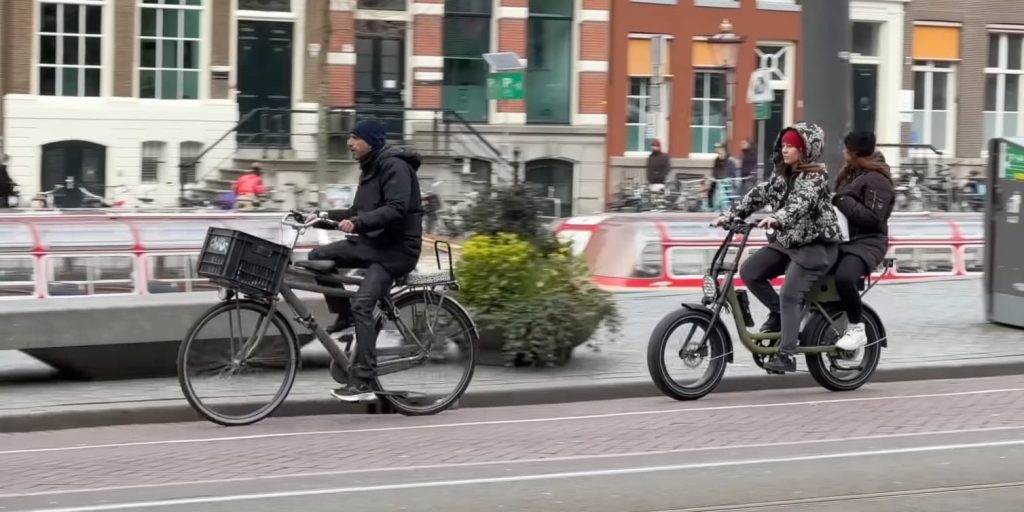
Tip 1: Avoid riding with cars unless necessary
This might sound like an odd tip for a guide on riding with cars, but hear me out. Just like in War Games, sometimes the only winning move is not to play. As much as Western car culture tries to deny it, the most dangerous thing on the road are cars themselves. They are the cause for nearly every cyclist death. The best way to get away with murder in the US (or many other countries) is to do it with a car.
So if you have bike lanes, please use them. If your city doesn’t have bike lanes, lobby your city council to install them.
This also doesn’t mean ride on the sidewalk, unless that’s the only safe option on the side of major roads with car traffic too fast to safely share (and in that case ride slowly and considerately around pedestrians). Instead, put an effort into finding a route that maximizes your use of safe, protected bike lanes whenever possible.
This isn’t meant to capitulate to dangerous drivers. In most areas, cyclists have every bit as much right to be on the road as drivers. But it doesn’t matter how right we are when Karen blows through us with a 6,000-pound SUV.
For those times when there just aren’t any good, safe bike lanes around, that’s what the rest of these tips are for.
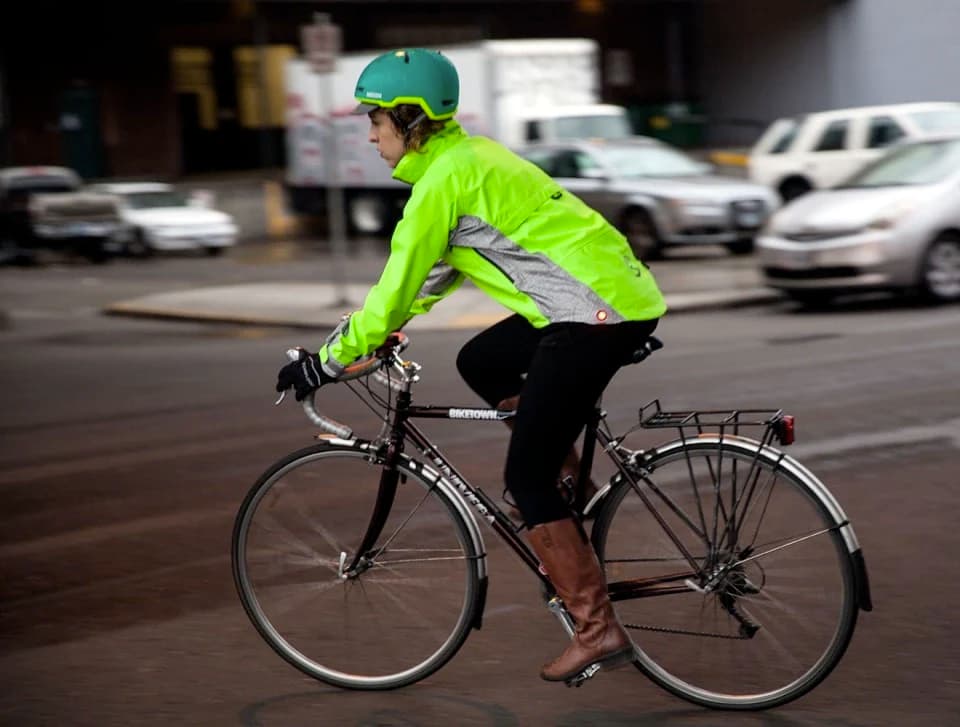
Tip 2: Be visible on the road
Getting seen is half the battle. Compared to cars, we’re a tiny little meat sack on a thin-tubed bike. Drivers simply aren’t looking for us. So we have to make sure they see us.
For me, being visible comes down to two things: my physical appearance and my physical placement. For the first issue, bright-colored clothing, bright-colored bikes (my favorite), and bright front/rear/side LED lights are a great start. Some cyclists wear anti-high visibility clothing because they consider it to be a form of victim-blaming or putting the onus on us to be seen by drivers. Well, I’ve got a news flash for you: Drivers aren’t looking for us and so we need to make ourselves be seen. I usually don’t opt for high-vis clothing myself, but instead usually ride a high-vis bike with bright paint and lots of lighting. My personal bikes are often orange or yellow.
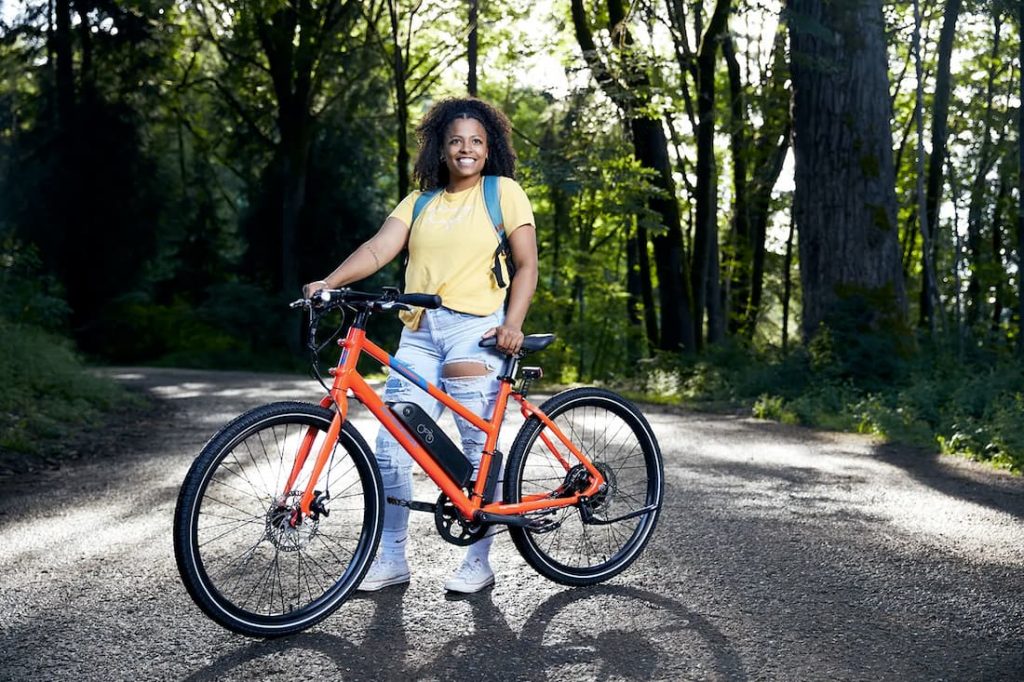
For the second issue, road placement is key. Where I live in Tel Aviv, bicycles and motorbikes roll up to the front of the red light and wait directly in front of the cars. They can’t not see us because we’re literally in front of their faces at the front of the line. When the light turns green, we all roll off first because we’re quicker and more agile, helping us get away from the cars who already know we’re there because they’ve been staring at our backs for the last 45 seconds.
In other cases when traffic backs up and I don’t have space to move around the cars due to narrow lanes (known as filtering), I pull directly in front of cars for the same reason: They see me. I’m just like every other vehicle on the road – I’m behind the car in front of me and in front of the car behind me. I can always see at least two of the mirrors of the car ahead of me, meaning they can see me too, and we’re all waiting there in a line like well-behaved citizens not trying to murder each other with our vehicles. If a car driver gets angry at seeing a cyclist in front of them while they are both standing still in traffic, then they should ask themselves why they harbor such hate in their heart. We’re all just waiting to go, man!
The last part of this is the idea of “owning your lane.” Check your local laws, but in many areas bicycles are treated like any other road-going vehicle when they’re on city streets. If I’m moving slower than the speed of traffic and there is enough space for cars to safely pass me, I’ll slide over to the right and let them do it. If there’s not enough space for a safe pass, I hang farther out towards the middle of my lane to prevent drivers from endangering me or anyone in the oncoming traffic lane by trying to squeeze through. There is nuance here though and it also depends on your local culture. Bikes are common here, so this is sort of understood. If the car behind you has a Texas license plate though, they may just decide the fastest way forward is through you, so use this concept with some discretion. There are times to own your lane and there are times to just pull the hell over and let a dangerous driver go past so they can go be dangerous somewhere else that isn’t around you.
Being visible to cars with bright lights and colors is a good start, but placing your bike in the proper spot in the lane to make yourself visible in traffic and at intersections is just as important.
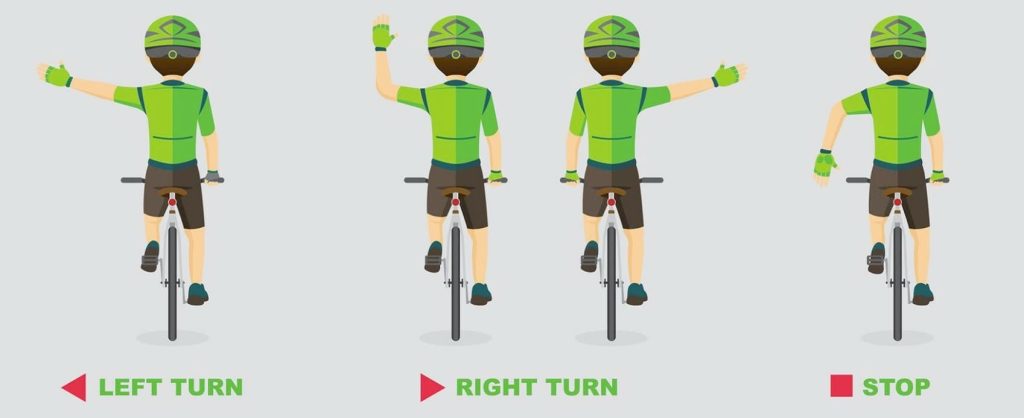
Tip 3: Communicate effectively with drivers
There are several ways to communicate with drivers, but the best ways I have found are with your arms and your eyes, in that order. Riding in Amsterdam taught me how effective eye contact is with other cyclists, but car drivers seem to be simpler creatures that usually require a blunter approach. Broad arm gestures are best because they are highly visible.
Typical bicycle hand signals for turns are good (though I don’t use the left arm at a right angle pointing up to indicate a right turn because no one knows what that means). Point with your arm in the direction you plan to turn. But don’t just point – stick your arm way out there. Wave it a little if you have to. Get the driver’s attention with it. E-bikes with turn signals are cute, but they’re largely ineffective.
When I’m crossing in a crosswalk at an intersection, especially when it’s a side street connecting to a main street where drivers are only looking for cross car traffic, I will wave at the drivers with my hand straight up in the air, wait until they make eye contact with me, then I’ll proceed forward. I usually give them a thumbs up and a smile as I go by, reinforcing that smug little “I just saved that guy’s life” feeling they get from communicating with a cyclist and allowing him to pass. Positive reinforcement never hurts.
When you have to cross multiple lanes of traffic, usually to get into a left turn lane, that is where things get dicey. Again, I use very broad arm gestures that can’t be mistaken. You can see this clearly in my video at 3:53 where I make an obvious left turn signal to show a car coming up on my tail that I’ll be moving over, then I begin moving over to show him that I’m not asking for permission but rather informing him of the fact that I’m moving over, but I balance that with only making enough progress to ensure he starts braking from seeing me, just in case I need to bail back into my lane if he’s a jerk about it. Again, there’s a lot of nuance here and it will take some time and confidence to get practiced at these types of maneuvers. Cars have the luxury of throwing on a blinker and blindly swerving between lanes all willy-nilly. As cyclists, we still have to change lanes sometimes but we must be much more clear and calculated about it.
The last note on communication is about horns. I’ve gone back and forth about this. There’s no stock e-bike horn that is effective, at least that I’ve seen. They are mostly wimpy little noisemakers that sound like they came out of a toy store keyboard. I used an for many years, and also rigged a motorcycle horn on my e-bike, both to great effect. But for the last several years I’ve been hornless. They can be effective, don’t get me wrong, but they can also be problematic. When you sound a horn, drivers look for other cars. They don’t expect you to be the horn owner (what with your silly little non-car thing you’re riding around on), and so sometimes a horn simply causes more momentary confusion. In an emergency, more confusion is often the last thing you want. So if you want to use a horn, use a loud one. But in most cases, an extra helping of foresight can prevent the need for getting to the point of using a horn on a bike.

Tip 4: Follow traffic laws (seriously)
This might either sound obvious or annoying, depending on your personal feelings on this, but I recommend following traffic laws to the best of your ability. The simple reason is not to protect others, but to protect yourself.
Car driver’s aren’t expecting you to blow through red lights or come the wrong way up a one-way street. For your own safety, following traffic laws gives you the best bet that drivers won’t be surprised by you.
That being said, there are few things sillier than a cyclist sitting at a red light for several minutes without a car going by. Traffic lights exist to prevent cars from plowing into each other. Purely cycle-only streets rarely have traffic lights because A) cyclists can communicate and figure it out between themselves, and B) getting hit by a bike is nearly immeasurably safer than getting hit by a car. That’s why rules like the “Idaho stop” exist in several places, allowing cyclists to treat red lights like stop signs and stop signs like yield signs. But in those cases, for your own safety it’s still critical that you actually confirm there’s no cross traffic before proceeding. It sounds obvious, but it bears repeating.
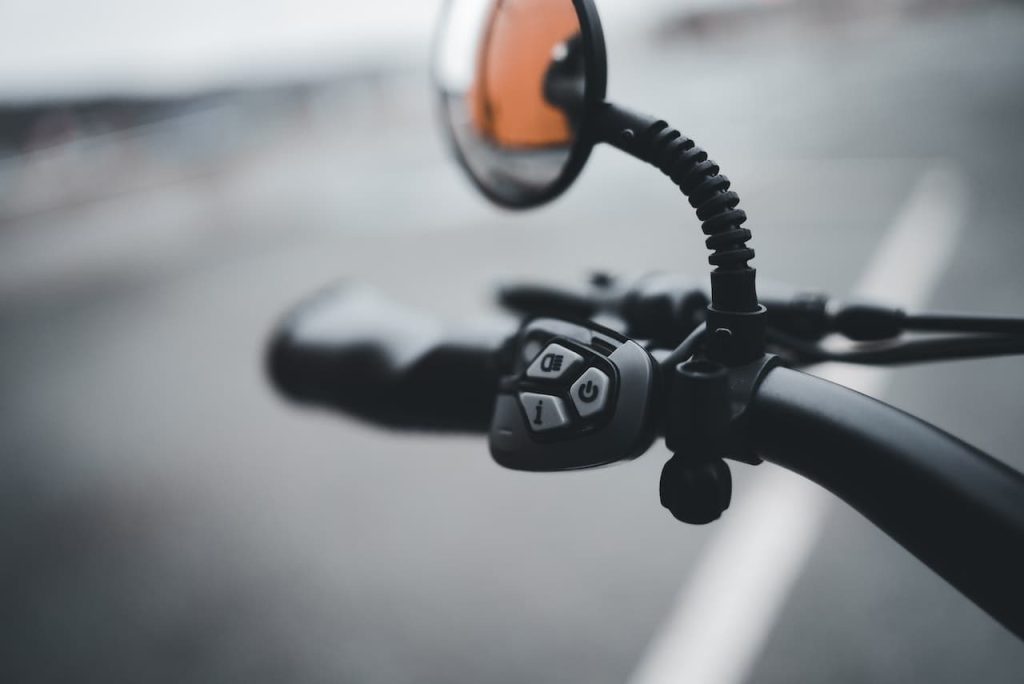
Tip 5: Be aware of your surroundings
Riding a bike around cars requires maintaining situational awareness. Mirrors are great, but I don’t use them much anymore because they make it harder to lane split by widening my handlebars too much (and the in-board ones just show me my shoulder). If you don’t lane split, a mirror is a great addition, though helmet mirrors can work for lane splitters too.
For everyone else, keep that head on a swivel. Shoulder checks are a must to know what’s going on around you. Use your eyes and your ears.
Also, for the love all things good in this world, take the dang ear phones off. If you want to wear them while riding on a bike path… well, that’s still a bad idea but it’s not as egregious. But when you’re on the road with cars, skip the ear phones. When I was in the army we weren’t allowed to wear two earbuds at any time. If we wore them at all, we had to always have one out to maintain awareness of our surroundings. That’s still how I wear them to this day. If I’m running, biking or anywhere in public, I’ve only got one ear bud in if I need them at all. When you’re sharing the road with 6,000-pound murder machines, you don’t need any additional handicaps like not being able to hear them coming.
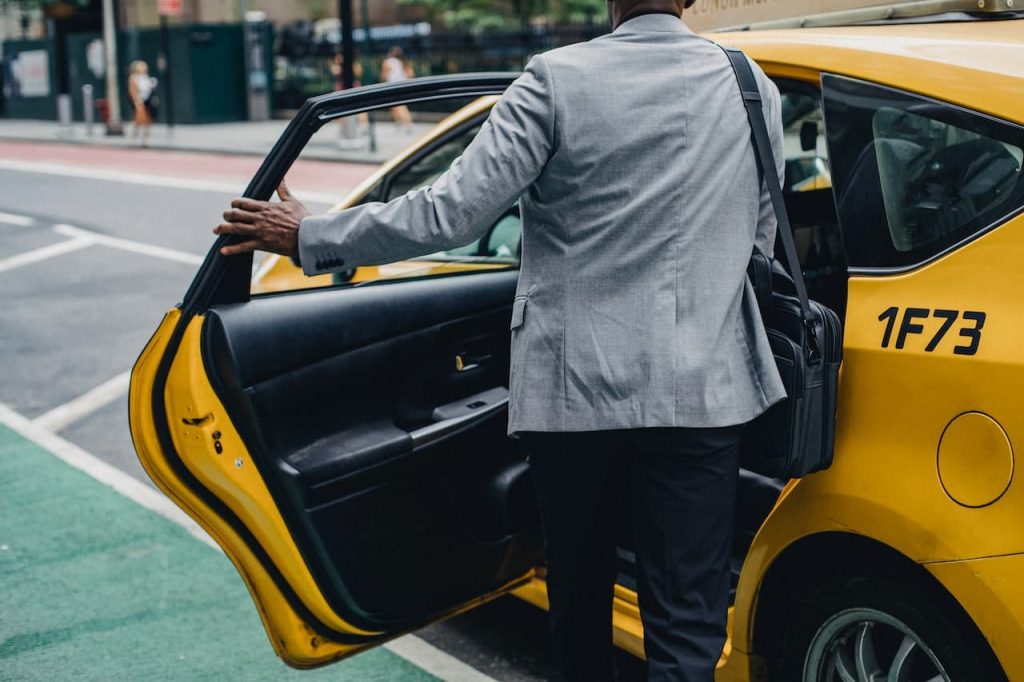
Tip 6: Don’t get doored
Getting doored is when a car opens a door right in front of you, causing you to crash into it. It can and has been deadly.
It’s usually the case of someone exiting a parallel parked car but sometimes happens when a driver stops in the traffic lane to let a passenger get out.
The best way to avoid this is to maintain one door-width of distance when you pass parked cars. When this isn’t possible due to narrow lanes, I slow down enough that I can hopefully react with enough time.
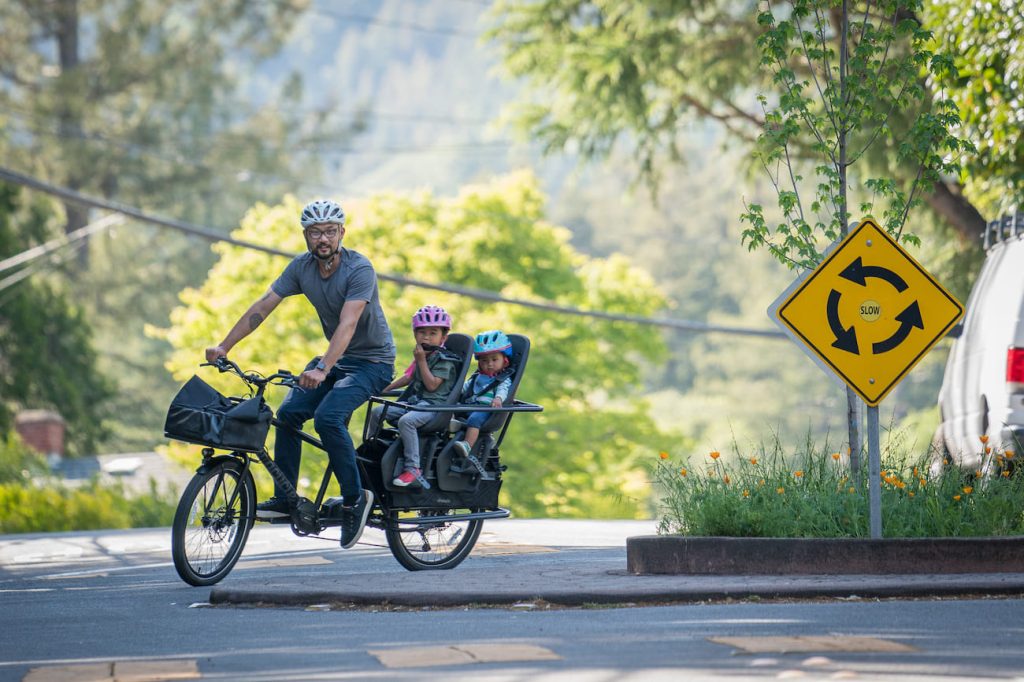
Tip 7: Use appropriate speed
Don’t go too fast, but don’t go too slow, whenever possible.
One major advantage of e-bikes and bicycles in general is that they can flow so much faster than the snail’s pace of city traffic. But don’t overdo it when passing cars, since you never know when a driver is going to do something unexpected.
On the flip-side, sometimes faster bikes are actually safer, especially when they can better keep up with the speed of traffic. If cars are doing 25-30 mph (40-48 km/h), then I’m going to match that speed as long as road conditions are safe to do so. That means I can still own my lane instead of getting repeatedly passed on the side of the road.
Going faster means less reaction time though, so keep that in mind. Leave enough following distance when you’re going faster. It’s not just about preventing a car from slamming on their brakes and hitting you. I once ruined a really nice motor wheel in one of my e-bikes when I was following too close and couldn’t avoid hitting a sudden pot hole. Things sneak up on you much quicker at higher speeds.

Tip 8: Be predictable
Drivers are dumb. I’m sorry, but they just are. I know this because I occasionally drive and I am dumber during those minutes inside the car. There’s something about being inside a steel cage that puts people on varying levels of autopilot. When I’m on my bicycles and motorcycles, I’m much more aware of everything around me, but in a car I can still fall victim to that autopilot effect.
That means you have to make it easy for drivers by being predictable. Don’t make any sudden quick turns or swerve between lanes. Instead, make broad and purposeful movements that indicate clear direction. Don’t suddenly slam your brakes, even though you’ve got those awesome hydraulic stoppers. Make smoother stops that are easier for drivers to gauge your deceleration (and use hand signals if necessary).
Basically, don’t surprise drivers because they tend to spook easily, especially when their subconscious mind had all but ignored you as a cyclist.

Tip 9: Look for driver decision cues
This is another nuanced one, but it will develop for you over time. As I ride, I’m constantly looking for cues and scenarios that will impact drivers around me so that I can predict their behavior instead of reacting to it.
If I’m rolling up to an intersection, I’m scanning for blinkers but I’m also looking for car behavior indicative of a turn even without blinkers. If the car in front of me going through an intersection doesn’t have its turn signal on but suddenly moves a foot or two to the left, there’s a high chance it is making space to turn right. I’ll instantly slow down so they don’t right hook me into the great bike shop in the sky. (Side note to drivers, even BMW drivers: You should always use your turn signals. Just because “there aren’t any cars around” doesn’t mean there isn’t a bicycle that you didn’t see.)
I don’t just look at the road in front of me, I also look at what is going on a few cars in front of me so I know if the column of cars will need to brake shortly.
If I’m lane splitting or just riding on the right side of my lane and I see a motorcycle is about to pass on the left, I roll forward or backward to make sure the motorcycle doesn’t “push” the car into me.
If there is debris in the road, I look for which side of the car column it is closer to in order to know which way they’ll move around it.
At intersections, I look at a car’s hubcap to see if it is really stopped or is actually slowly crawling forward (spinning motion is easier to pick up on with a quick glance from a moving vantage point).
Anticipating the behavior of drivers can be difficult, but small cues like these can help.
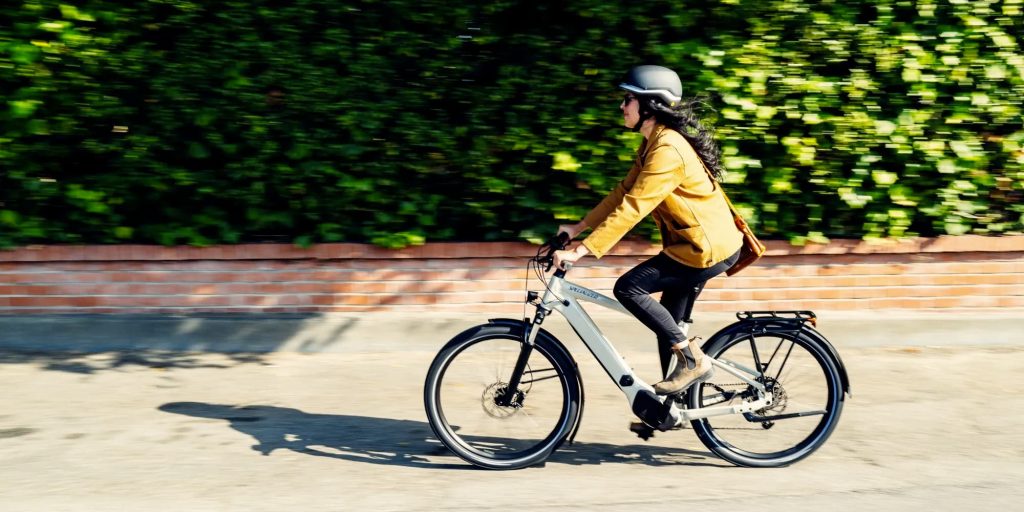
Tip 10: Safety equipment
This one is unfortunately a bit controversial, but safety equipment is probably a good idea. I always wear a helmet at a bare minimum but also try to ride in pants and close-toed shoes. You may also want to consider gloves or protective pads, depending on your own personal preferences.
When I first started riding e-bikes around 2010 or so, I wore a full face motorcycle helmet. I still wear my motorcycle gear sometimes when riding out of class e-bikes that go extra fast, but I generally just wear a “normal” bike helmet most of the time. There are several good full face bicycle helmets now, often popular with downhill mountain bike riders, but I see more and more people wearing them in the city. It’s a great idea if you want your face to still look pretty in addition to keeping your brain from getting scrambled.
My personal thought process is that skin grows back, broken bones heal, brain injuries don’t heal. Ultimately, your level of safety equipment is a choice that only you can make. I’m amazed every time I’m in Amsterdam and I’m the only one wearing a helmet, but I understand that location and culture make a big difference in how much safety gear is advisable.
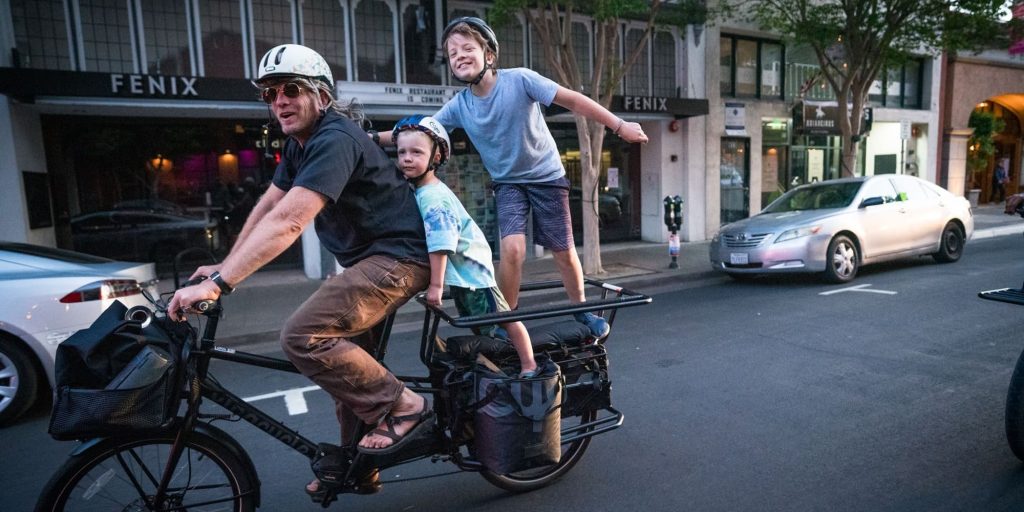
Bonus tip: Dust in your eyes
Here’s a little extra tip I’ve found that is super specific but I wind up using it a lot. If you don’t wear sun glasses, then clear safety glasses like from a machine shop are a good way to keep dust out of your eyes. I almost never have them when I need them though, so when I see that I’m about to pass through a dust cloud, I preemptively close one eye.
Sure, you briefly lose depth perception. But if you get dust in your eyes then the bodily reflex is to immediately slam shut your eyes. That’s… not good when you’re flying down the road at 28 mph (45 km/h). With one of my eyes already closed, if the other eye gets dust in it then I can close it and open my “spare” eye so I maintain vision. Then I have time to work on the blinking, watery mess of the other eye. It’s also useful for swarms of flying bugs like gnats.
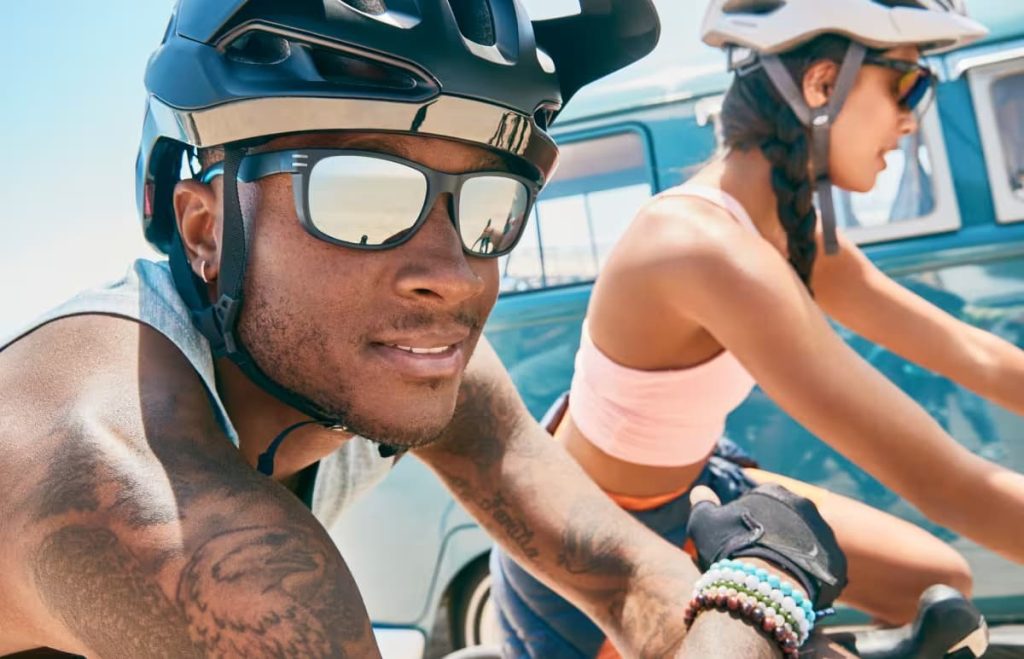
Stay safe out there
Wow, I can’t believe you made it to the end. You either really care about bike safety or you’re my copy editor. Nice!
To put a pretty bow on this, the take-home message here should be that riding an e-bike can be a fast, fun, and efficient way to travel your city. But riding with cars is also fraught with potential danger. Until our cities do a better job building protected bike lanes, the best we can do is protect ourselves with the knowledge and skills needed to interact with those cars safely.
Stay safe out there and ride on!
Author: Micah Toll
Source: Electrek



